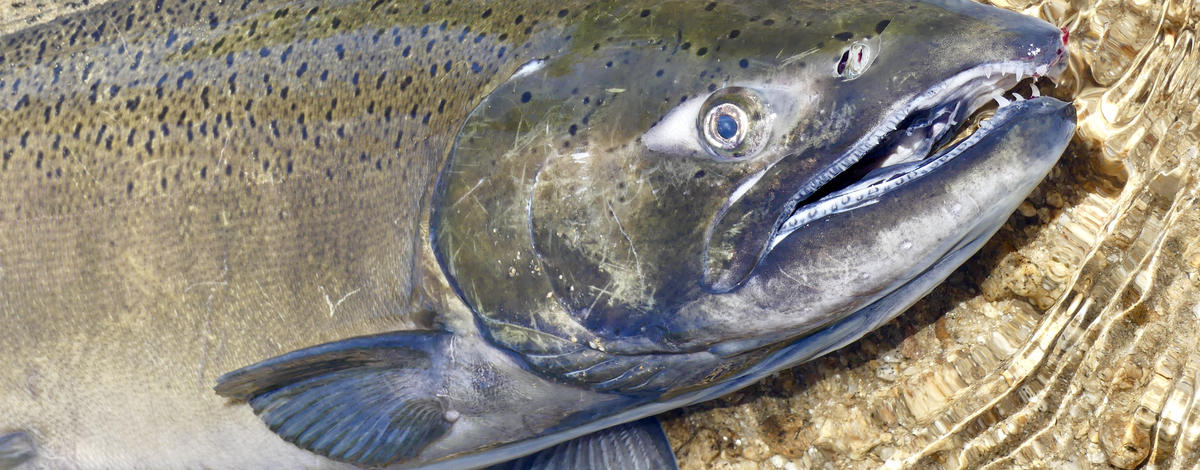It is fall in central Idaho. Everything seems to be in a hurry to get somewhere before the first leaf falls from the trees. Chinook salmon have an extraordinary sense of urgency. This is their spawning season. They have a short period of time to reach their spawning grounds before they die.
Meanwhile, several agencies and tribes migrate to these waters to document this event. Established stream transects are surveyed each year. Some have been surveyed since the 1950s.
Specifically, surveyors are looking for Chinook salmon nests. The nests are called redds. Female salmon will excavate the nest and cover the eggs with gravel after they are fertilized by a male. (For more information about Chinook salmon redd identification click here.)
Besides documenting the redds, the crews collect data from the Chinook carcasses. They collect information about the fish’s size and condition, whether it is of hatchery or natural origin, and all tags and other marks they may have. Samples are also collected to determine their age and genetic details.
The crews conduct the surveys by truck, foot, rafts, helicopters, and now small unmanned air systems, also known as drones.
Before heading for the streams, crews must attend spawning ground survey training sessions. This is to ensure accuracy and consistency among the diverse group of participant agencies and tribes.
The data allows fisheries and habitat managers to track anadromous fish population trends. Resource managers and others will use this information to guide policy decisions to support the fish. The survey data is especially helpful to detect fish response to habitat changes whether by natural causes, such as wild fires, or man-made, such as after habitat restoration projects.
The ultimate goal of all this attention to detail is to preserve, protect, perpetuate, and manage these magnificent salmon for current and future generations.
For more information on Idaho’s wild salmon and steelhead click here.

